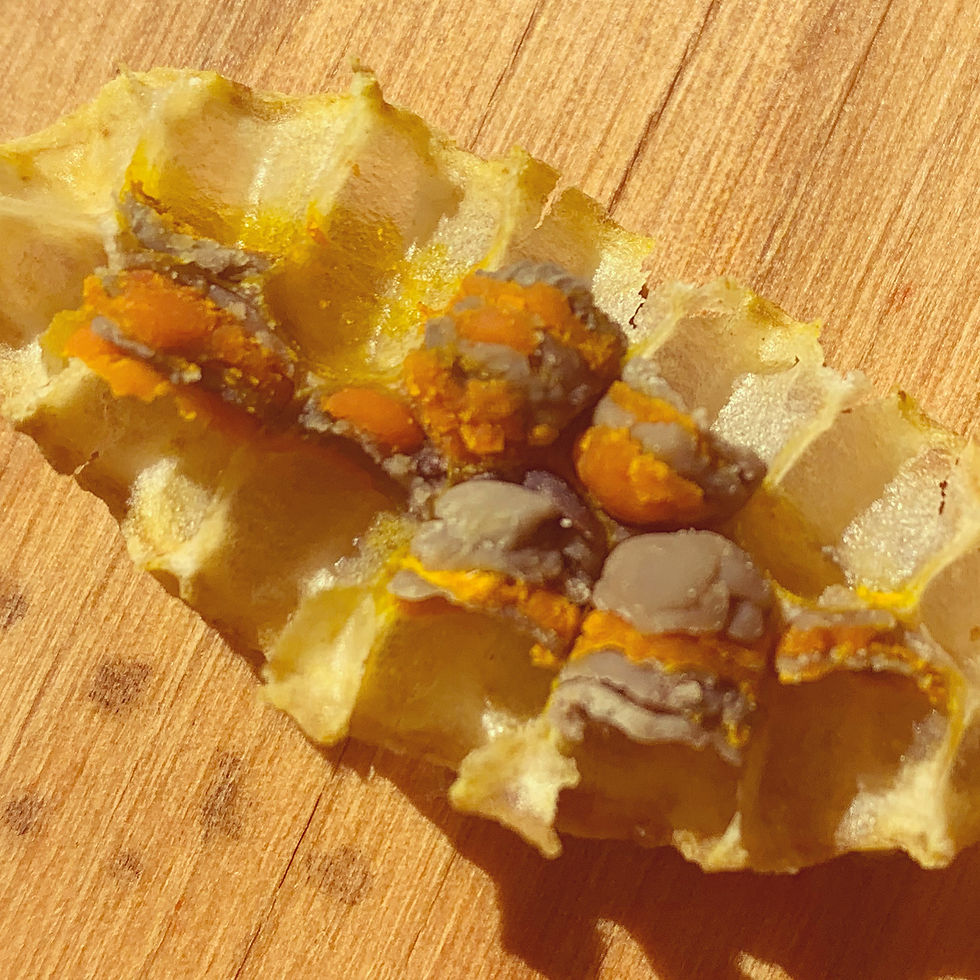Newbees: What is That? (Part 2)
- rushingriverapiaries
- Jul 10, 2022
- 3 min read
Updated: Apr 30, 2024
This is a collection the slightly less typical stuff that you may find in your hive and what it means. We still are not looking at diseases and pests - that will come next.

Dead bees on the doorstep. This is usually nothing to worry about until the pile of dead bees starts to look alarming. During the summer, it's normal to have anything up to 100 bees being cleaned out of the hive on a daily basis. In late summer, you will notice that most of these are drones as their sisters kick them out.
If you see more than 100, or if the dead bees are accompanied by bees that look unwell (twitching, unable to walk or fly) then they may have gotten into some pesticide.
Be warned: the small pile of dead bees sometimes stinks!

It looks like a queen cell, and it is, but it hasn't been opened in the usual way. This cell was torn open from the side by another virgin queen who emerged first.
This means that you definitely have a virgin in your hive and that means you likely DON'T have eggs or small larvae. Wait 2 weeks and then start to look for eggs again.

This shapeless white goo is royal jelly. It sometimes spills out of queen cells that are torn open when removing a frame or separating the top and bottom brood boxes. The bees will quickly consume it.

Larvae and pupae, although fragile, have a distinct shape. It can be hard to tell whether it is a drone or queen unless you see the cell that it came out of (it's not usually worker brood if it's broken open between frames).

Bearding can be a bit alarming, but is a normal occurrence on busy hives in the heat of summer. These bees are just hanging out on the front porch until the inside temp of the hive cools down a bit.
If it's a very small colony and it looks like more bees on the outside than the inside, then it could be a swarm waiting to move in, but that is much more improbable.

These are pollen cells that were torn open between frames. Each larvae will be fed one full cell of pollen so it stands to reason that there should be a lot of this in the hive!

This is a queen cell with royal jelly and a larva inside. You can tell it's a queen cell because it is pointing straight down off the frame. It takes a bit of flipping and turning, but it's important to look up inside queen cups to see if they are "charged" before making any management decisions.

Lumpy brood, also known as popcorn brood, occurs when a queen has run out of stored sperm (and turned into what we call a 'drone layer,' or when a hive has been queenless for a while and a laying worker takes over.
Both problems require immediate attention or the colony will not survive.
See something interesting in your hive and you're not sure what it is? Send me a photo, either via Instagram or to rushingriverapiaries@gmail.com and I'll add it to this collection along with a description of what it is and what it means!
Looking for more?
Looking for more beekeeping education? You can find my virtual, on-demand beginner and intermediate courses at https://courses.rushingriverapiaries.com
Or if you'd prefer a more tailored experience, you can join my mentorship group at https://www.patreon.com/thehivementorship

Comments